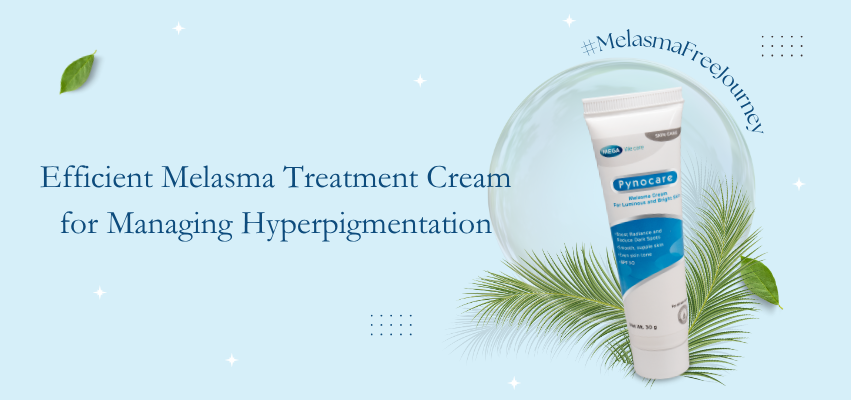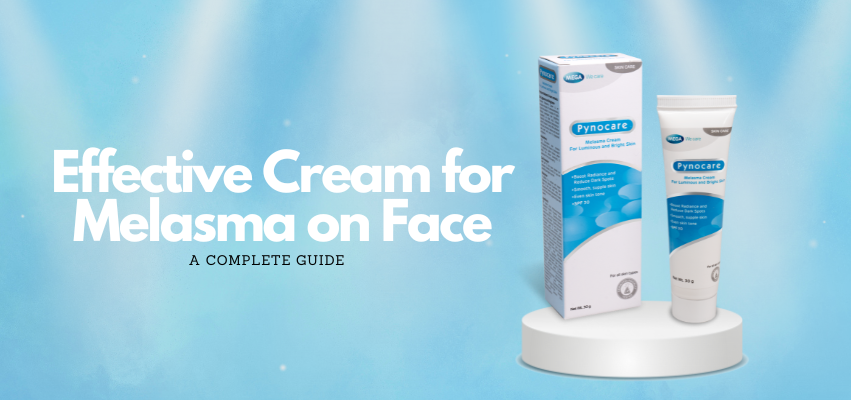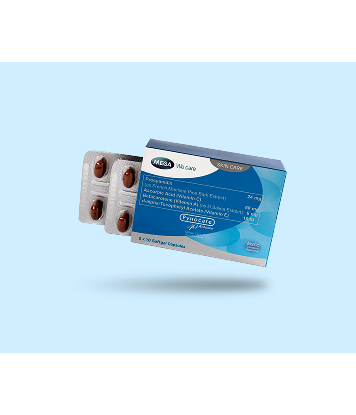We often hear the term “pekas” when people describe the dark spots and patches found on the skin. When you go to Google Translate, it will show that pekas in English are called “freckles”. This mistranslation may seem harmless, but it can have significant consequences when it comes to diagnosis and treatment. Freckles are small, concentrated spots of melanin often caused by sun exposure. Melasma, on the other hand, manifests in larger, irregular patches triggered by a complex interplay of factors, including hormones and genetics. This crucial distinction is often lost in mistranslation.
Mistranslations and cultural nuances can lead to misunderstandings, potentially resulting in misdiagnoses and the use of incorrect treatments. Misdiagnosing melasma as freckles can lead to the use of inappropriate treatments that may prove ineffective or even worsen the condition. For example, topical treatments designed to lighten freckles may not address the underlying hormonal or genetic factors contributing to melasma. So what really is pekas in English?
What is Pekas and How is this Condition Acquired?
Pekas in English is melasma. The exact causes of melasma aren’t fully understood. However, several factors play a significant role:
Hormonal Influences
Changes in estrogen and progesterone levels can trigger melasma. These fluctuations can be related to pregnancy, birth control pills, and hormone replacement therapy.
- Melanocyte stimulation: Estrogen and progesterone can stimulate melanocytes. This increased activity can lead to an overproduction of melanin, causing the characteristic brownish, gray, or bluish patches associated with melasma.
- Increased melanin production pathways: These hormones may increase the expression of specific enzymes like tyrosinase, which plays a key role in melanin synthesis. This further amplifies melanin production and contributes to melasma.
- Melanosome transfer: Melanin are contained within organelles called melanosomes. Estrogen and progesterone may influence how melanosomes are transferred from melanocytes to surrounding keratinocytes (skin cells). This can lead to uneven distribution of melanin, contributing to the patchy appearance of melasma.
Sun Exposure
Sun exposure is a major factor in the development and worsening of melasma. This is the reason why sun protection is a mainstay in any melasma treatment plan.
- Ultraviolet (UV) radiation: UV rays from the sun, particularly UVB rays, stimulates melanocytes. This stimulation leads to increased melanin production, a natural defense mechanism to protect the skin from further sun damage. Ultraviolet (UV) light from the sun stimulates melanin production, exacerbating melasma.
- UV-induced inflammation: UV radiation can also trigger an inflammatory response within the skin. This inflammation can further stimulate melanocyte activity and melanin production, contributing to the development and worsening of melasma patches.
- Visible light: More recent studies suggest that visible light from the sun may also play a role in melasma. Visible light can penetrate deep into the skin and may stimulate melanogenesis through different pathways compared to UVB rays.
Genetic Predispositions
Genetics play a significant role in an individual’s susceptibility to developing melasma. A family history of melasma increases your risk of developing the condition. One study found that 48% of the participants who had melasma have relatives with the same condition.
Melasma is also more common in individuals with Fitzpatrick skin types IV-VI (darker skin tone). This is likely due to a combination of factors, including naturally higher baseline melanocyte activity and potentially genetic variations that influence melanin production in these skin types. Most Filipinos fall under types III-V, thus, the high incidence of melasma among Filipinos.
Other Lifestyle Factors
While not directly causing melasma, several lifestyle factors can contribute to its development and worsen existing symptoms.
- Stress: While the exact mechanism is still being investigated, research suggests a potential link between stress and melasma. Chronic stress can elevate cortisol levels in the body, which may indirectly influence melanocyte activity and contribute to melasma development or exacerbation.
- Certain medications: Certain medications, aside from oral contraceptives and hormone replacement therapies, like anti-seizure medications, and some antibiotics, can trigger or worsen melasma in some individuals. This is because these medications can alter hormone levels or increase skin sensitivity to sunlight, creating an environment conducive to melasma development.
- Cosmetics: While rare, some cosmetics containing irritating ingredients or fragrances can trigger inflammation in the skin, potentially worsening melasma by stimulating melanocyte activity. Individuals with melasma should be cautious and opt for gentle, fragrance-free products.
Exploring Treatment Options for Melasma
While complete elimination melasma is difficult, it could be possible. Various treatment options can significantly improve its appearance. Melasma treatment is not a one-size-fits-all approach. Consulting a board-certified dermatologist is essential for creating a personalized plan based on your individual needs and medical history.
- Sun Protection: Regardless of the treatment chosen, consistent and rigorous sun protection is crucial. With sun exposure being the most significant factor influencing melasma, sun protection is the cornerstone of pekas treatment. This means daily application of a broad-spectrum sunscreen with SPF 30 or higher, even on cloudy days, and seeking shade during peak sun hours.
- Hydroquinone: This remains the gold standard for melasma treatment. It works by gradually lightening the darkened patches. However, its use may be limited due to potential side effects like irritation and ochronosis (blue-black discoloration). Certain combinations with hydroquinone such as the Kligman formula (5% hydroquinone, 0.1% tretinoin, and 0.1% dexamethasone) and modified Kligman formula (4% hydroquinone, 0.05% tretinoin, and 0.01% fluocinolone acetonide) are used to improve efficacy and manage side effects.
- Retinoids: Retinoids work in three ways: inhibit melanogenesis by increasing keratinocyte turnover, reduce melanosome transfer to the keratinocytes, and inhibiting tyrosinase transcription. Topical retinoids are available in 3 forms: tretinoin, adapalene and tazarotene. These medications help exfoliate the skin and can improve the effectiveness of other lightening agents.
- Other Topical Agents: Other topical agents used in melasma management include azelaic acid, alpha-arbutin, kojic acid, ascorbic acid, and niacinamide.
- Chemical Peels: These procedures, when used in conjunction with other therapies, aim to remove the top layer of skin and promote even-toned growth. Chemical peels, performed by dermatologists, can help in the exfoliation of the top layer of the skin, promoting the growth of new, evenly pigmented skin. Chemical peeling agents used for melasma include glycolic acid, salicylic acid, Jessner solution (i.e., salicylic acid, lactic acid, and resorcinol), 20% trichloroacetic acid, and tretinoin.
- Laser Therapies: Laser therapy for melasma aims to target and break down excess melanin within the skin, lightening the appearance of the patches. There are several types of laser used for melasma management.
- Fractional Non-ablative Lasers: These lasers deliver targeted pulses of light that penetrate the deeper layers of the skin where melanin resides. They create microscopic injuries that trigger the body’s natural healing process, promoting collagen production and melanin breakdown. Fractional lasers like the 1550/1540 nm lasers are considered the only FDA-approved laser treatment for melasma due to their effectiveness and lower risk of side effects.
- Q-Switched Lasers: These lasers deliver high-intensity, short-duration pulses of light that specifically target melanin particles. Lasers like the Q-switched Nd:YAG and Alexandrite lasers can be effective for deeper melasma, but careful use is crucial to avoid post-inflammatory hyperpigmentation.
- Oral Tranexamic Acid: Oral tranexamic acid has emerged as a promising option in the fight against melasma. While not a first-line treatment, it can be a valuable tool for managing the condition, particularly when used in combination with topical medications and sun protection. However, it should be noted that you should never use this medication without proper evaluation and consultation with your physician.
- Pynocare (Procyanidin + Ascorbic Acid + Betacarotene + d-Alpha-Tocopheryl Acetate): Pynocare is the only over-the-counter oral medication for melasma that is approved by the FDA in the Philippines. It is clinically-proven through clinical trials conducted in the Philippine and other Southeast Asian countries to reduce melasma appearance in as fast as 8 weeks of continuous use. It is usually taken 1 tablet twice a day for 8 to 12 weeks depending on the severity of melasma and as prescribed by your physician. It is taken after meals to minimize occurrence of side effects such as stomach upset which is rare.
- Procyanidin: The primary benefit of procyanidin lies in its potent antioxidant properties. It helps combat free radicals, unstable molecules that can damage skin cells and contribute to hyperpigmentation, a hallmark of melasma. By neutralizing free radicals, procyanidin may help protect the skin from further damage and potentially reduce melanin production.
- Vitamins A, C, & E: Vitamins A, C, and E play a supportive role in melasma management. While these vitamins may not be a standalone solution for melasma, their contributions to skin health and potential for managing melasma make them a valuable addition to the growing number of treatment options.
Final Thoughts
Accurate diagnosis and understanding cultural nuances are pivotal in addressing skin conditions like pekas. Mistranslations can lead to misdiagnosis and the use of inappropriate treatments, emphasizing the need for effective communication between patients and healthcare providers. Having an understanding about pekas or melasma and its contributing factors, individuals can make informed decisions about their management options, ultimately promoting healthy and radiant skin. If you suspect you have melasma or any skin condition, consult with a qualified healthcare professional or a board-certified dermatologist for a precise diagnosis and tailored treatment plan.
Moreover, adherence to treatment combined with sun protection are essential for managing melasma and achieving optimal results. While complete elimination may not always be achievable, with the right approach and expert guidance, significant improvements in the appearance of melasma are possible.
References
- Chaowattanapanit, S., Silpa‐archa, N., Kohli, I., Lim, H. W., & Hamzavi, I. (2017). Postinflammatory hyperpigmentation: A comprehensive overview. Journal of the American Academy of Dermatology, 77(4), 607–621. https://doi.org/10.1016/j.jaad.2017.01.036
- Ludmann, P. (2022). Melasma: Diagnosis and Treatment. https://www.aad.org/public/diseases/a-z/melasma-treatment
- Liu, W., Chen, Q., & Xia, Y. (2023). New mechanistic insights of Melasma. Clinical, Cosmetic and Investigational Dermatology, Volume 16, 429–442. https://doi.org/10.2147/ccid.s396272
- Morgado-Carrasco, D., Piquero-Casals, J., Granger, C., Trullàs, C., & Passeron, T. (2022). Melasma: The need for tailored photoprotection to improve clinical outcomes. Photodermatology, Photoimmunology & Photomedicine, 38(6), 515–521. https://doi.org/10.1111/phpp.12783
- Sarkar, R., Aurangabadkar, S., Salim, T., et al. (2017). Lasers in Melasma: A Review with Consensus Recommendations by Indian Pigmentary Expert Group. Indian Journal of Dermatology, 62(6), 585–590. https://doi.org/10.4103/ijd.IJD_488_17
- Ogbechie-Godec, O. A., & Elbuluk, N. (2017). Melasma: an Up-to-Date Comprehensive Review. Dermatology and Therapy, 7(3), 305–318. https://doi.org/10.1007/s13555-017-0194-1
- Basit, H., Godse, K. V., & Aboud, A. M. A. (2023, August 8). Melasma. StatPearls – NCBI Bookshelf. https://www.ncbi.nlm.nih.gov/books/NBK459271/
———————————————————————————————————————————————————————
PYNOCARE (Procyanidin + Ascorbic Acid + Betacarotene + d-Alpha-Tocopheryl Acetate)
The first and only oral medicine that is clinically proven to reduce Melasma or dark spots formation in as early as 8 weeks. Unlike creams, lotions, and gels, it has MSCC or Melasma Skin Clear Complexion Complex formulation that deeply penetrates the inner layers of the skin, to help normalize melanin levels, thus minimizing the appearance of dark spots in a short time.
Mega Lifesciences Limited Inc. or Mega We Care, is actively involved in helping millions of people have access to safe, effective, world-class quality nutritional & herbal supplements, OTC, and ethical products.





















No Comments on What is Pekas in English and How is this Skin Condition Acquired?